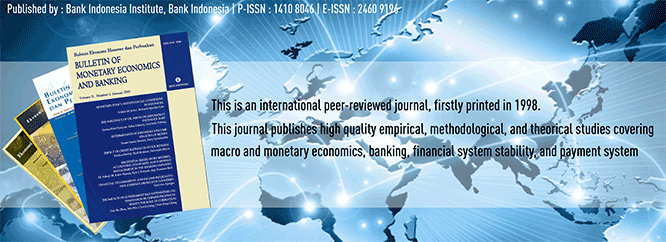
Document Type
Article
Abstract
Recently, numerous Central Banks implement various macro-prudential policies to complement the existing monetary policy. This paper analyzes the impact of these policies along with the market structure, on the bank’s performance. Using panel data analysis, this paper conclude that the reserve requirement ratio policy negatively affect the bank’s performance (ROA). The empirical test shows the banking industry in Indonesia respond to the increase of reserve requirement by raising the Net Interest Margin to achieve their targeted operating profits. Secondly, this paper fail to find uniform conclusion across model variants about the effect of the policy rate on bank’s performance. This also applies on the Loan to Value policy. Fourth, the market concentration has a more significant effect on banks’ profitability as compared to market power. Fifth, the production index significantly affects the banking profitability. These findings implies a necessity for policy makers to review the financial market structure before formulating effective policy package to promote a healthy competition in the banking industry
Recommended Citation
Silalahi, Tumpak; Manurung, Adler H; and Hidayat, Yuli Teguh
(2015)
"THE MARKET STRUCTURE OF THE BANK, ITS PERFORMANCE, AND THE MACROPRUDENTIAL POLICY,"
Bulletin of Monetary Economics and Banking: Vol. 18:
No.
1, Article 3.
DOI: https://doi.org/10.21098/bemp.v18i1.514
Available at:
https://bulletin.bmeb-bi.org/bmeb/vol18/iss1/3
First Page
45
Last Page
60
Creative Commons License

This work is licensed under a Creative Commons Attribution-NonCommercial 4.0 International License
Country
Indonesia
Affiliation
Bank Indonesia







